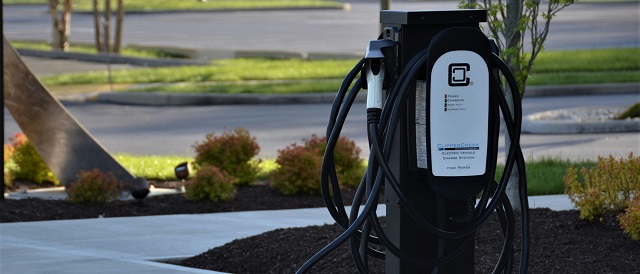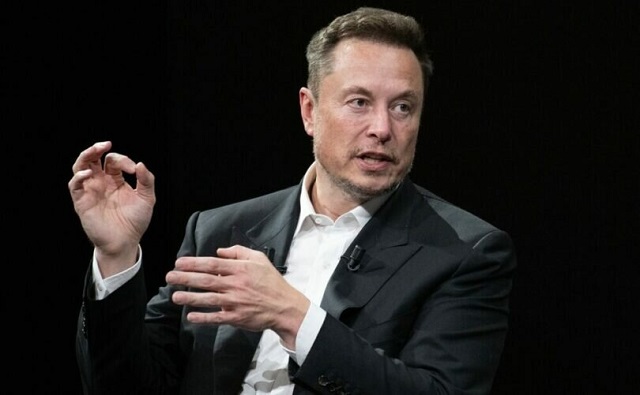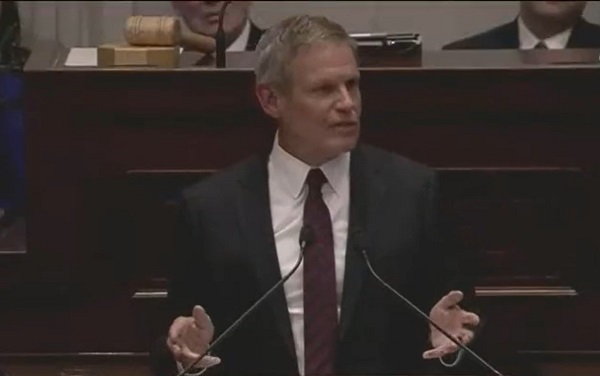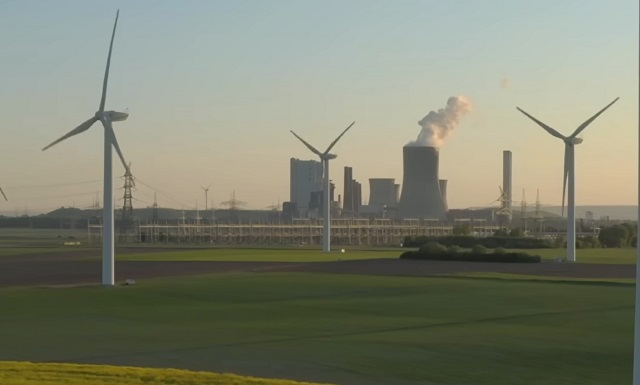Economy
Ottawa should follow Britain and tap the brakes on ‘net zero’

From the Fraser Institute
In a recent speech, British Prime Minister Rishi Sunak put a dent in the façade of the global “net zero” greenhouse gas emission agenda—that is, the idea that countries will emit no more greenhouse gases (such as CO2 and methane) into the air than are taken back out and “sequestered” in some form that won’t increase atmospheric heating. The net zero framework has subsumed virtually all energy, environment and natural resource policies in many countries including Canada.
Sunak did not reject net zero, but he clearly took his foot off the gas and started tapping the brake, acknowledging that people are not happy with the way it’s playing out: “We seem to have defaulted to an approach which will impose unacceptable costs on hard-pressed British families. Costs that no one was ever told about, and which may not actually be necessary to deliver the emissions reduction that we need.”
And Sunak extended some timelines in the United Kingdom’s net zero program. His government increased the deadline for ceasing sales of new internal combustion vehicles from 2030 to 2035. And rather than phasing out the sale of all gas boilers by 2035, the U.K. will phase out 80 percent of them by that date. The government will also now not require homeowners and landlords to meet various energy efficiency guidelines. Small changes to a large program, but a pioneering move away from today’s net zero timelines.
Here at home, Canadians also labour under the economic impacts of the Trudeau government’s net zero zeal. Canada’s carbon tax, a key net zero pillar, slated to rise to $170 per tonne by 2030, will put the hurt on Canadian households well in excess of the rebates given out by Ottawa. And a $170-per tonne carbon tax will cause the economy to shrink by about 1.8 per cent, causing a permanent loss of nearly 185,000 jobs and reducing real incomes in every province.
Similarly, according to the Parliamentary Budget Officer, 60 per cent of households in Alberta, Ontario, Saskatchewan and Manitoba—the four provinces where the federal carbon tax applies—will pay more in carbon taxes than they get in rebates. By 2030, 80 per cent of households in Ontario and Alberta will be worse off and 60 per cent will be worse off in Manitoba and Saskatchewan.
Of course, the cost impacts of Canada’s net zero plan will likely expand well beyond the carbon tax, with emission caps on Canada’s oil and gas sector, a net zero goal for Canadian waste management, ambitious (some would say impossible) mandates to electrify transportation in Canada, new “Clean Electricity Regulations” that will raise the cost of electricity, energy-efficient construction standards that can only further increase the already insane costs of housing and commercial property development in Canada, and possible restrictions on agricultural use of fertilizers that could raise Canadian food prices beyond even today’s outrageous levels.
Sunak’s net zero slowdown is not exactly the stuff of Brexit, but it may be a harbinger of things to come for other countries shaking under the weight of their own net zero ambitions. Most importantly, it’s a precedent other governments can invoke to justify adjusting their own destructive net zero programs. The Trudeau government would do well to follow Sunak’s lead and reduce net zero targets, soften timelines, remove regulatory burdens, and generally reform the policy before the full brunt of the economic impact throws more Canadian households into the red.
Author:
Economy
‘Gambling With The Grid’: New Data Highlights Achilles’ Heel Of One Of Biden’s Favorite Green Power Sources

 From the Daily Caller News Foundation
From the Daily Caller News Foundation
By NICK POPE
New government data shows that wind power generation fell in 2023 despite the addition of new capacity, a fact that energy sector experts told the Daily Caller News Foundation demonstrates its inherent flaw.
Wind generation fell by about 2.1% in 2023 relative to 2022 generation, despite the 6 gigawatts (GW) of wind power capacity that came online last year, according to data published Tuesday by the U.S. Energy Information Administration (EIA). That wind power output dropped despite new capacity coming online and the availability of government subsidies highlights its intermittency and the problems wind power could pose for grid reliability, energy sector experts told the DCNF.
The decrease in wind generation is the first drop on record with the EIA since the 1990s; the drop was not evenly distributed across all regions of the U.S., and slower wind speeds last year also contributed to the decline, according to EIA. The Biden administration wants to have the American power sector reach carbon neutrality by 2035, a goal that will require a significant shift away from natural gas- and coal-fired power toward wind, solar and other green sources.

A table depicting the decrease of wind power generation in 2023 relative to 2022. (Screenshot via U.S. Energy Information Administration)
“Relying on wind power to meet your peak electricity demands is gambling with the grid,” Isaac Orr, a policy fellow at the Center of the American Experiment who specializes in power grid-related analysis, told the DCNF. “Will the wind blow, or won’t it? This should be a moment where policymakers step back and consider the wisdom of heavily subsidizing intermittent generators and punishing reliable coal and gas plants with onerous regulations.”
Between 2016 and 2022, the wind industry received an estimated $18.6 billion worth of subsidies, about 10% of the total amount of subsidies extended to the energy sector by the U.S. government, according to an August 2023 EIA report. Wind power received more assistance from the government than nuclear power, coal or natural gas over the same period of time.
“This isn’t subsidies per kilowatt hour of generation. It’s raw subsidies. If it were per kilowatt hour of generation, the numbers would be even more extreme,” Paige Lambermont, a research fellow at the Competitive Enterprise Institute, told the DCNF. “This is a massive amount of money. It’s enough to dramatically alter energy investment decisions for the worse. We’re much more heavily subsidizing the sources that don’t provide a significant portion of our electricity than those that do.”
“Policy that just focuses on installed capacity, rather than the reliability of that capacity, fails to understand the real needs of the electrical grid,” Lambermont added. “This recent disparity illustra
Wind power’s performance was especially lackluster in the upper midwest, but Texas saw more wind generation in 2023 than it did in 2022, according to EIA. Wind generation in the first half of 2023 was about 14% lower than it was through the first six months of 2022, but generation was higher toward the end of 2023 than it was during the same period in 2022.
In 2023, about 60% of all electricity generated in the U.S. came from fossil fuels, while 10% came from wind power, according to EIA data. Beyond generous subsidies for preferred green energy sources, the Biden administration has also aggressively regulated fossil fuels and American power plants to advance its broad climate agenda.
Biden’s Climate Bill Boosted An Offshore Wind Giant, But His Economy Brought It To The Brink https://t.co/AF7SPT2FNu
— Daily Caller (@DailyCaller) November 3, 2023
The Environmental Protection Agency’s (EPA) landmark power plant rules finalized this month will threaten grid reliability if enacted, partially because the regulations are likely to incentivize operators to close plants rather than adopt the costly measures required for compliance, grid experts previously told the DCNF. At the same time that the Biden administration is effectively trying to shift power generation away from fossil fuels, it is also pursuing goals — such as substantially boosting electric vehicle adoption over the next decade and incentivizing construction of energy-intensive computer chip factories — that are driving up projected electricity demand in the future.
“The EIA data proves what we’ve always known about wind power: It is intermittent, unpredictable and unreliable,” David Blackmon, a 40-year veteran of the oil and gas industry who now writes and consults on the energy sector, told the DCNF. “Any power generation source whose output is wholly dependent on equally unpredictable weather conditions should never be presented by power companies and grid managers as safe replacements for abundant, cheap, dispatchable generation fueled with natural gas, coal or nuclear. This is a simple reality that people in charge of our power grids too often forget. Saying that no doubt hurts some people’s feelings, but nature really does not care about our feelings.”
Blackmon also pointed out that, aside from its intermittency, sluggish build-out of the transmission lines and related infrastructure poses a major problem for wind power.
“Wind power is worthless without accompanying transmission, yet the Biden administration continues to pour billions into unreliable wind while ignoring the growing crisis in the transmission sector,” Blackmon told the DCNF.
Another long-term issue that wind power, as well as solar power, faces is the need for a massive expansion in the amount of battery storage available to store and dispatch energy from intermittent sources as market conditions dictate. By some estimates, the U.S. will need about 85 times as much battery storage by 2050 relative to November 2023 in order to fully decarbonize the power grid, according to Alsym Energy, a battery company.
The White House and the Department of Energy did not respond to requests for comment.
Alberta
Alberta government should eliminate corporate welfare to generate benefits for Albertans

From the Fraser Institute
By Spencer Gudewill and Tegan Hill
Last November, Premier Danielle Smith announced that her government will give up to $1.8 billion in subsidies to Dow Chemicals, which plans to expand a petrochemical project northeast of Edmonton. In other words, $1.8 billion in corporate welfare.
And this is just one example of corporate welfare paid for by Albertans.
According to a recent study published by the Fraser Institute, from 2007 to 2021, the latest year of available data, the Alberta government spent $31.0 billion (inflation-adjusted) on subsidies (a.k.a. corporate welfare) to select firms and businesses, purportedly to help Albertans. And this number excludes other forms of government handouts such as loan guarantees, direct investment and regulatory or tax privileges for particular firms and industries. So the total cost of corporate welfare in Alberta is likely much higher.
Why should Albertans care?
First off, there’s little evidence that corporate welfare generates widespread economic growth or jobs. In fact, evidence suggests the contrary—that subsidies result in a net loss to the economy by shifting resources to less productive sectors or locations (what economists call the “substitution effect”) and/or by keeping businesses alive that are otherwise economically unviable (i.e. “zombie companies”). This misallocation of resources leads to a less efficient, less productive and less prosperous Alberta.
And there are other costs to corporate welfare.
For example, between 2007 and 2019 (the latest year of pre-COVID data), every year on average the Alberta government spent 35 cents (out of every dollar of business income tax revenue it collected) on corporate welfare. Given that workers bear the burden of more than half of any business income tax indirectly through lower wages, if the government reduced business income taxes rather than spend money on corporate welfare, workers could benefit.
Moreover, Premier Smith failed in last month’s provincial budget to provide promised personal income tax relief and create a lower tax bracket for incomes below $60,000 to provide $760 in annual savings for Albertans (on average). But in 2019, after adjusting for inflation, the Alberta government spent $2.4 billion on corporate welfare—equivalent to $1,034 per tax filer. Clearly, instead of subsidizing select businesses, the Smith government could have kept its promise to lower personal income taxes.
Finally, there’s the Heritage Fund, which the Alberta government created almost 50 years ago to save a share of the province’s resource wealth for the future.
In her 2024 budget, Premier Smith earmarked $2.0 billion for the Heritage Fund this fiscal year—almost the exact amount spent on corporate welfare each year (on average) between 2007 and 2019. Put another way, the Alberta government could save twice as much in the Heritage Fund in 2024/25 if it ended corporate welfare, which would help Premier Smith keep her promise to build up the Heritage Fund to between $250 billion and $400 billion by 2050.
By eliminating corporate welfare, the Smith government can create fiscal room to reduce personal and business income taxes, or save more in the Heritage Fund. Any of these options will benefit Albertans far more than wasteful billion-dollar subsidies to favoured firms.
Authors:
-

 COVID-1914 hours ago
COVID-1914 hours agoAstraZeneca withdraws COVID vaccines worldwide amid lawsuits alleging severe harm
-

 John Stossel2 days ago
John Stossel2 days agoThe Swamp Survived: Why Trump Failed to “Drain the Swamp”
-

 Energy2 days ago
Energy2 days agoU.S. EPA Unveils Carbon Dioxide Regulations That Could End Coal and Natural Gas Power Generation
-

 Automotive1 day ago
Automotive1 day agoNew Analysis Shows Just How Bad Electric Trucks Are For Business
-

 Opinion1 day ago
Opinion1 day agoBoy Scouts of America changes name to ‘Scouting America’ to be ‘more inclusive’
-

 COVID-1920 hours ago
COVID-1920 hours agoElon Musk’s X will help fund COVID shot critic’s ongoing legal battle against Canadian university
-

 National21 hours ago
National21 hours agoTaxpayers Federation presents Teddy Waste Awards for worst government waste
-

 Censorship Industrial Complex11 hours ago
Censorship Industrial Complex11 hours agoInternet censorship laws lead a majority of Canadians to believe free speech is threatened: poll











